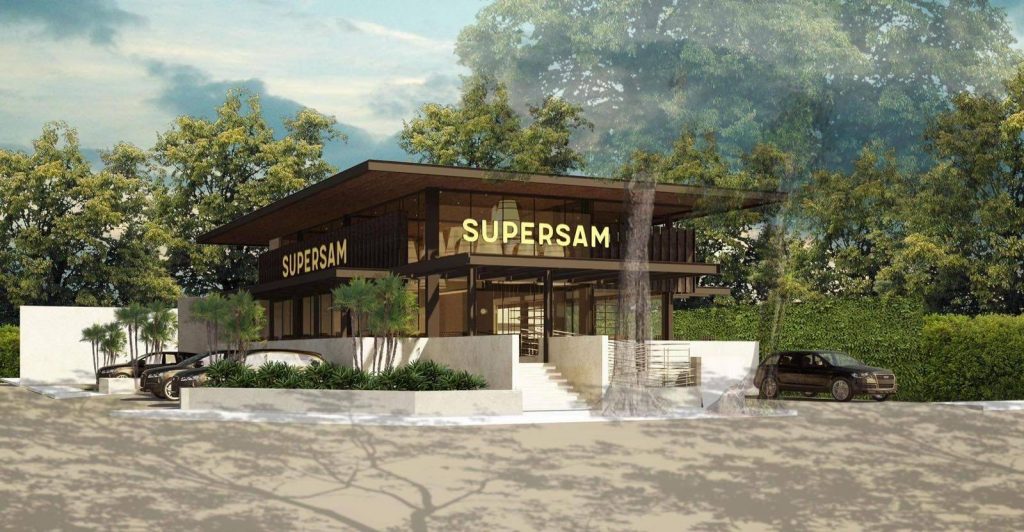Will our cities ever look the same again after the pandemic?
With many working and studying from home in the past year, areas that were once bursting with life are now struggling. This phenomenon is what Stanford University economics professor Nicholas Bloom calls the donut effect where “major city centers are being hollowed out by a fear of crowds and the growth of working from home.”
Artist and lecturer Karl Castro—who teaches typography, print production, and Philippine design at Ateneo De Manila University—chose to live in Katipunan for several reasons. “I like the area because it is close to two universities that are also some of the last remaining green spaces in the metro. The residential buildings were full of students, the dining options were varied in cuisine and price point. On top of this, many of my friends live in the vicinity so it became much easier to get together.”
With many working and studying from home in the past year, areas that were once bursting with life are now struggling. This phenomenon is what Stanford University economics professor Nicholas Bloom calls the donut effect where “major city centers are being hollowed out by a fear of crowds and the growth of working from home.”
But when the community lockdown last year was announced, Castro saw firsthand how it took a massive toll on the area. “One by one, many of my favorite eating spots died out. It was quite depressing to go out on the rare walk or errand and see all the shuttered places,” he recounts. “As long as schools remain closed, Katipunan will always feel like a neighborhood in hibernation. A vital segment of its population, a major source of its vitality and verve, has deserted it.”
Opportunity from adversity
One restaurant that originally planned to cater to the Katipunan demographic was startup burger joint Supersam. Owner Gerry Sy and partner Sharon Carlos were lucky to have only been starting out in January 2020, which gave them enough time to rethink and regroup. “We paid for the construction bond in January and were supposed to start constructing in April. The difference between us and an established restaurant is that we weren’t already paying a huge overhead when the lockdown started,” he says.

Sy wanted to target schools and was simultaneously building a Supersam branch in Recto but the challenges presented by the pandemic meant that they had to shift strategies quickly. “The pandemic gave us a lot of opportunities to do R&D.” They built a commissary so they can serve burgers for delivery. Now, they average about 200 chori burgers a day through delivery alone.
Supersam is still planning to build a brick and mortar but this time, with a whole new strategy: a wider demographic that consumes draft beer, a larger dining area that can accommodate al fresco, and a new location in the more residential Tomas Morato neighborhood.
“With an exodus of investment leaving expensive cities, the food markets often follow suit. But this presents many exciting opportunities as well. Outdoor dining and events, walkability—these have become more desirable and could prove to be a more profitable and less resource-intensive model compared to traditional storefronts,” says Celina Agaton.
The local donut effect
Andrew Magana of Typica Coffee originally set up shop in downtown Antipolo near the Antipolo Cathedral. When the community quarantine was announced in March 2020, the cafe was only two months into operations. Many establishments and vendors in the area couldn’t survive without the usual foot traffic of commuters and visitors of the church. Typica Coffee was no exception.
Magana eventually had to close the branch and shift to selling bottled cold brew coffee online. It wasn’t until he found a sari-sari store in his old neighborhood in Taytay that he envisioned putting up another cafe. “By September 2020, we decided to rebrand Typica Coffee and turned a sari-sari store into a Japanese-inspired coffee shop, a small community coffee counter that provides affordable pastries and beverages with a grab-and-go concept.”
The cafe’s Japanese influence was also dictated by Magana’s small P80,000 starting capital. He had to make smart choices on the cafe’s look and design without going over budget—like using white paint and cheaper reclaimed wood, and allocating only a small outdoor seating area. “Typica Coffee’s Japanese minimalist features represent a delicate, nonintrusive design that attracts attention to itself peacefully. There was an overwhelming reception from the community due to the straightforward concept, especially when customers knew that this used to be a sari-sari store,” Magana says.
“Typica Coffee’s Japanese minimalist features represent a delicate, nonintrusive design that attracts attention to itself peacefully. There was an overwhelming reception from the community due to the straightforward concept, especially when customers knew that this used to be a sari-sari store,” Andrew Magana says.
Where are they going?
As more and more people stay home, businesses are expected to move where their customers are. “The challenge now is how food markets will serve their communities in the long-term,” says Celina Agaton, founder of MapPH, who has been helping revitalize local economies through heritage preservation, food security, and sustainable tourism among others.
“With an exodus of investment leaving expensive cities, the food markets often follow suit. But this presents many exciting opportunities as well. Outdoor dining and events, walkability—these have become more desirable and could prove to be a more profitable and less resource-intensive model compared to traditional storefronts.”
These bold moves outside bustling cores certainly demonstrate the start of what could be an unpredictable gestation period for the foodservice industry. But as the pandemic continues to expose how cities are failing its inhabitants—think three-hour commutes, lack of green spaces and parks, and a dearth of easy access to nutritious food—Agaton leaves us with this quote:
“Jane Jacobs, who is considered the mother of urban planning, famously said that ‘Cities have the capability of providing something for everybody, only because, and only when, they are created by everybody.’”

